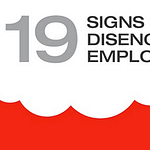It’s no secret that employers often face difficulties when recruiting, which leads to a trickle-down effect to the human resources department. HR isn’t just responsible for attracting and hiring new candidates; they also have to take on the monumental task of retaining employee engagement.
The answer to retaining high-quality employees isn’t as simple as “finding top talent.” Your team needs a unified understanding before you can find candidates who are willing to stay.
What Everyone Wants From the Employee Recruitment Process
Most organisations and their subsequent job titles will have a few similarities in the recruitment process, but subtleties within your industry may require you to take a different approach.
For example, the real estate recruitment process requires hiring managers to look at what other brokers offer (the competition) to examine why people prefer to work for a different brokerage.
Every company needs to conduct a competitor analysis, but not every industry needs to provide access to income statements in real-time to keep their employees engaged. You need to look at both your general and specific hiring goals to develop the best HR recruitment strategy.
In general, your stakeholders expect the following strategies in your process:
- Financial departments prefer long-term sustainability to make staffing budgets.
- Hiring managers want low turnover rates and a streamlined hiring process.
- Leaders want their teams to be adequately staffed and work well together.
- Recruiters want to have the right tools to hire the right people.
However, the candidate is the most important and often overlooked person in the recruitment process. The employee experience can make all the difference between whether a candidate stays for three months or 10 years, so you can’t drop the ball when it comes to engagement.
What to Implement in Your Recruitment Strategy
In 2018, the US job economy had more job openings than available candidates, however the Great Registration has made the situation a lot more challenging since the pandemic. It’s a candidate’s market now, so your recruitment strategies have to reflect the current market. Here’s how to make the transition.
Align Your Brand With Engagement
Branding is both the easiest and hardest way to attract employees. Think of your brand as a first impression: what do most people think/say/feel after hearing your business name? Do you think your business values reflect well with your visual branding or how you communicate?
It’s not a good idea to claim that your business offers employee engagement when your current employees feel this part is lacking. HR can run an anonymous survey that asks if aspects of your company culture reflect the brand. That way, you can change it if necessary.
Take Your Time With the Process
The old adage “hire slow, fire fast” sounds harsh, but your productivity will grind to a halt if the people you’re hiring aren’t meshing well with your company. That’s why it’s necessary to take the time to perfect your hiring process, which may mean recruitment will slow down at first.
Keep in mind that your ability to fill an empty seat isn’t an indication your recruitment strategy is successful. We encourage you to stick to your course if you want to find a suitable match, even if the position needs to be filled immediately. Otherwise, you’ll have to repeat the hiring process.
Re-evaluate How You Qualify Job Leads
There are several recruitment strategies out there, but most of them require a lot of upfront time finding qualifying leads. Although this strategy feels like it’s the most effective because you’re looking at a broad candidate base, it’s actually the least effective the longer the process goes.
HR teams may rush to pick a candidate to finish the process. After all, they need to fill the position “now.” But if that’s the case, HR should focus on finding a few qualifying leads on job sites, social media, or through industry networking, not collecting them with a program.
Set Up an Employee Referral Programme
Employee referral programmes are the secret weapon of recruiters because they reap higher quality hires. Plus, you’ll spend less money on the recruitment and hiring process because your employees have done that for you. Chances are, your employee’s instincts are spot on.
Finding and hiring new employees via referrals and networking is one of the best ways to find a loyal and engaged talent pool. Although your employee has done most of the work, it’s still essential to follow through with the interview, training, and onboarding process as usual.
Share Employee Engagement Stories
Social media is a valuable resource in your recruitment strategy, especially if your employees like, comment, and share your posts. If more people see how happy your employees are with your brand, your recruitment strategy will become almost effortless and less time-consuming.
Something as simple as posting your employee engagement numbers from an anonymous survey will provide free advertising for your company. Several businesses implemented an engagement survey after the lockdown to show that their remote teams were productive.
Create a POsitive Engagement Cycle
People want to work where they feel they belong. When candidates see that your employees are sharing their own engagement stories, either on social media or in person, they’ll feel excited to work for you. With HRs encouragement, they can create an engagement cycle.
An engagement cycle begins by encouraging current employees to share their experiences. When new employees feel impacted by these stories, they’ll feel a sense of belonging, start to thrive, and create their own stories, showing that engagement is a continuous investment.
Offer a Better Interview Experience
Your candidates are very familiar with cookie-cutter interview questions. They can answer them in their sleep, which isn’t a good thing. Candidates are more likely to tell you what you want to hear, especially on negative questions like “what’s your greatest weakness,” so scrap them.
To offer a more engaging interview, use a conversational approach. Give all candidates a strong explanation of your company’s values and core culture. Finally, explain in detail what role needs to be filled and offer information regarding training, recruitment, benefits, and salary.
Author: Rupert Jones – Owner at Finance Rupert Consulting
Photo credit: RODNAE Productions from Pexels




